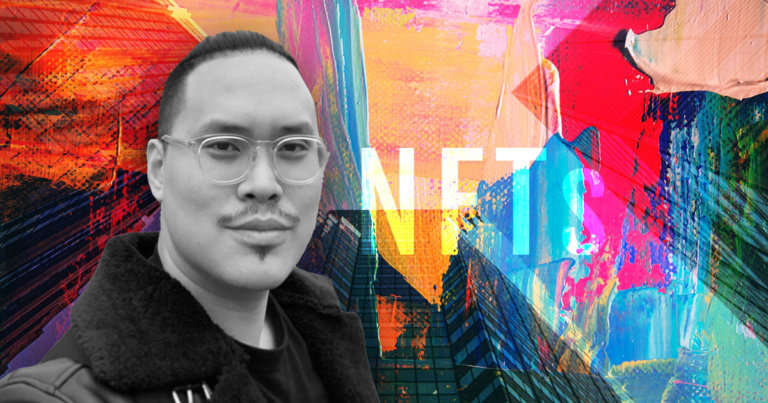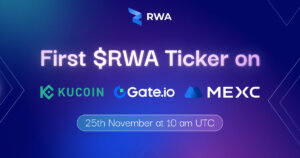 This crypto founder tells us why NFTs are the future of digital assets
This crypto founder tells us why NFTs are the future of digital assets This crypto founder tells us why NFTs are the future of digital assets
Are NFTs just a fad or the start of something much bigger? Andrew Fai is the author of a new whitepaper on NFTs and shares his vision the evolution of "smart collectibles."

Cover art/illustration via CryptoSlate. Image includes combined content which may include AI-generated content.
CryptoSlate recently had the opportunity to chat with Andrew Fai, the author of a new whitepaper entitled Smart Collectibles: Unlocking The Value of Non-Fungible Tokens.
In addition, Andrew is the co-founder of DeStation Protocol and widely recognized as a thought leader within the NFT space and respected as the power networker connecting opportunities and talent for Crypto 100 and Fortune 500 companies since 2017.
In the interview, we discuss:
- How Andrew got into crypto
- Biggest misconceptions about NFTs
- Inspiration for authoring the NFT whitepaper
- Why he chose to release the whitepaper into the public domain
- Most important milestones for NFT adoption
- Major challenges for NFT adoption in the near future
- and much more!
Interview with Andrew Fai, DeStation Protocol Founder
What is your professional background, and how did you get into crypto?
Before getting into the crypto industry in 2017, I worked as a financial advisor at Waddell & Reed, and things got boring after two years of suit and tie. So, thanks to digital serendipity and google retargeting ads, I decided to take this MIT Online GetSmarter FinTech course to learn about new financial trends. Out of all the topics, blockchain captured my imagination; Right then and there, I knew it would be a massive opportunity, so I decided to transition out of my job and joined a small crypto media company based in Taiwan.
What is the biggest misconception about NFTs? Are NFTs a necessary element of Web 3.0?
Most people believe NFTs store digital artwork content, and the value is lost when the content is duplicated and share without permission. That’s not true. NFT is a digital certificate that authenticates the ownership of the digital content at the most basic level. Before the existence of NFT, it was difficult to securely trade digital art due to the inability to prove provenance in a verifiable manner.
Now, NFTs will enable a Digital Renaissance to empower digital artists and content creators. As crypto wallets come installed into every smartphone, we can expect a large number of wallets to have NFTs in them as a way to access added value unique to the NFT holders themselves. Without a doubt, NFTs will unlock the limitless potential of Web 3.0.
What was the inspiration for authoring the Smart Collectibles NFT White Paper?
Nick Szabo’s Smart Contracts – Building Blocks for Digital Markets – whitepaper has been the single most important inspiration for me to write the Smart Collectibles whitepaper. Nick Szabo distilled the concept and laid down the principles required to the smart contract design when blockchain was non-existent. The whitepaper served as the foundation for how distributed ledger technology evolved to where it is today.
Why did you choose to make the NFT whitepaper available for the public domain?
I chose to license the Smart Collectibles whitepaper under Creative Commons because I wanted to introduce an easier terminology for the mainstream to grasp the potential of NFTs and remind artists to continue building value for their NFT communities. Moreover, I believe it’s about time to start shifting the NFT discussion on use cases rather than mere crypto artwork.
NFTs seem to be the next evolution of digital assets. Other than digital art, what do you foresee as the best NFT use cases?
Same Digital Art NFT can be assigned with external value off the blockchain, such as accessing gaming, identity, voting, events, fashion, virtual and physical resources. Out of all exciting use-cases, I’m confident to say that NFT sign-ins will replace email or password account verification. This use case will change the way how we secure digital assets and how we control our data.
What have been the most important milestones thus far for NFT adoption?
In my opinion, Christie’s Beeple NFT was the catalyst that bridged the gap between the crypto enthusiasts and the mainstream art world together. I recall getting invited by Beeple to share the stage with him. A genuinely remarkable soul that taught us the virtue of hard work and market timing. Thanks to Beeple, MakersPlace, and Christie’s, the world saw the value of digital art for the first time. Nevertheless, crypto art is only the beginning for NFTs, as it is the easiest for most people to understand and relate to.
What are some companies you admire that are working on building the NFT ecosystem?
Dapper Lab’s CTO Dieter and the other folks that contributed to the ERC-721 token standard were the ones that coined the term Non-Fungible Token. Of course, Dapper Labs (formerly Axiom Gem) beautifully utilized the ERC-721 standard to create the world-famous Crypto Kitties game on Ethereum.
Since then, Crypto Kitties has inspired a new generation of crypto game enthusiasts and entrepreneurs. Fast forward to now, Dapper Labs are doing it again with NBA Topshot, and their rollout of Flow Blockchain has immense potential to onboard more users to blockchain-powered games.
Who are some NFT artists or individual builders that are helping trailblaze NFT adoption?
Matthew Liu and his team at Origin Protocol are making significant progress with helping artists mint and sell their NFTs on their own platforms.
That said, the recent Charlie Bit Me drop symbolized the impending wave of reminiscent meme content artists resurfacing to issue their NFTs. To keep things in perspective, I believe we’re just getting started with massive NFT adoption.
What do you see as the major challenges for NFTs over the next few years?
Crypto wallet adoption. I believe we need more user-friendly wallets that can integrate with add-on services accessible to unique NFT owners. That said, I feel like wallet companies need to work more closely with NFT creators.
What is the ideal relationship between DAOs and NFTs?
Although we see many DAOs functioning as art funds that actively bid on unique pieces, I believe we shall see more Gaming related DAOs pushing the boundaries of on-chain governance.
To create a game that can be economically capable and sufficient to last forever, community members can assemble a DAO to inherit game ownership from the original creators and establish decision parameters for each of the different roles contributing to the governance, and then finally, enable an in-game token economy that can fund itself throughout the game’s evolutions, possibly, for eternity.
What is the metaverse and what does it mean for NFT usage?
Following Piers Kicks’ essay “Into The Void: Where Crypto Meets the Metaverse,“ he has defined the Metaverse is a persistent, live digital universe that affords individuals a sense of agency, social presence, and shared spatial awareness, along with the ability to participate in an extensive virtual economy with profound societal impact.
What NFTs enable for the first time is a decentralized, universal digital representation and ownership layer through which scarcity, uniqueness, and authenticity can be transparently managed.
Will NFTs become as ubiquitous to collectibles as cryptocurrencies have become to digital assets?
I believe the collective NFT market will surpass the cryptocurrency market capitalization because any digital file can be tokenized into an NFT. That includes code snippets, contracts, ownership certificates, and more.
Where can users go to learn more about the Smart Collectibles Whitepaper?
They can visit smartcollectibleswhitepaper.org, and also I welcome anyone to follow me on Twitter and join a few Twitter Spaces or Clubhouse discussions I’m involved with.
Connect with Andrew Fai
The idea of DeStation Protocol was conceived by Andrew Fai, a serial blockchain entrepreneur.



 Farside Investors
Farside Investors 


 CoinGlass
CoinGlass 























































































